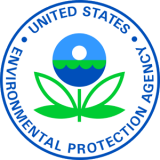EPA Takes Important Step to Further Protect Children from Exposure to Lead-Contaminated Dust; Region 7 Joins Event in St. Joseph, Missouri
Environmental News
FOR IMMEDIATE RELEASE

At the St. Joseph Health Department today, EPA Region 7 Administrator Jim Gulliford participated in an event alongside St. Joseph Mayor Bill McMurray, HUD Deputy Regional Administrator Bruce Ladd, and St. Joseph Health Department Director Debra Bradley.
“EPA is delivering on our commitment in the Trump Administration’s Federal Lead Action Plan to take important steps to reduce childhood lead exposure,” said Wheeler. “Today’s final rule is the first time in nearly two decades EPA is issuing a stronger, more protective standard for lead dust in homes and child care facilities across the country.”
“Today’s final rule is an important step needed to reduce childhood lead exposure in schools and childcare facilities across our country,” said Gulliford. “Recognizing that all Americans deserve an opportunity to live in safe and healthy environments, EPA Region 7 is committed to continuing a collaborative approach with our city, state and federal partners to address this threat and protect the health of our nation’s most vulnerable – our children.”
“EPA’s updating its standards for lead dust on floors and windowsills in pre-1978 homes and child-occupied facilities is an important advance,” said Carson. “We will use this new rule in updating the lead safety requirements for the pre-1978 housing we assist.”
“HUD continues to work with EPA and other federal agencies to reduce children’s exposure to lead sources and help ensure the children and families we serve are safe,” said HUD Regional Administrator Jason Mohr.
Since the 1970s, the United States has made tremendous progress in lowering children’s blood-lead levels. In 2001, EPA set standards for lead in dust for floors and window sills in housing. However, since that time, the best available science has evolved to indicate human health effects at lower blood-lead levels than previously analyzed.
To protect children’s health and continue making progress on this important issue, EPA is lowering the dust-lead hazard standards from 40 micrograms of lead per square foot (µg/ft2) to 10 µg/ft2 on floors, and from 250 µg/ft2 to 100 µg/ft2 on window sills. The more protective dust-lead hazard standards will apply to inspections, risk assessments, and abatement activities in pre-1978 housing and certain schools, child care facilities, and hospitals across the country.
Lead-contaminated dust from chipped or peeling lead-based paint is one of the most common causes of elevated blood-lead levels in children. Infants and children are especially vulnerable to lead paint exposure because their growing bodies absorb more lead than adults do, and their brains and nervous systems are more sensitive to the damaging effects of lead. They can be exposed from multiple sources and may experience irreversible and lifelong health effects. Lead dust can be generated when lead-based paint deteriorates or is disturbed.
The rule will become effective 180 days after date of publication in the Federal Register.
- For a link to this final rule and to learn more, visit EPA's website.
- Learn more about the lead-based paint program
- A press kit is available online.
Background
Reducing childhood lead exposure and addressing associated health impacts is a top priority for EPA. In December 2018, EPA Administrator Wheeler and other federal officials produced the "Lead Action Plan," a blueprint for reducing lead exposure and associated harms by working with a range of stakeholders, including states, tribes and local communities, along with businesses, property owners and parents.
EPA continues to work with its federal partners to improve coordinated activities and implement objectives of the "Lead Action Plan."
# # #
Learn more about EPA Region 7
View all Region 7 news releases
Connect with EPA Region 7 on Facebook: www.facebook.com/eparegion7
Follow us on Twitter: @EPARegion7
